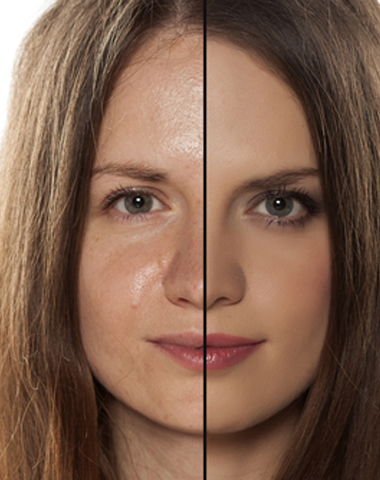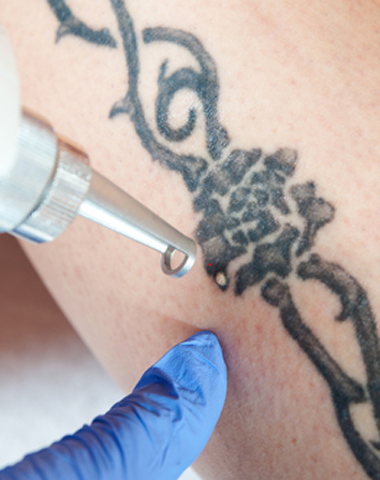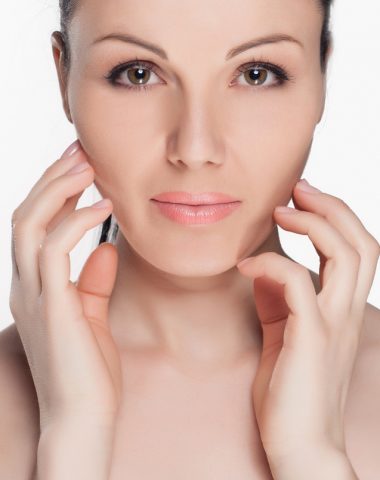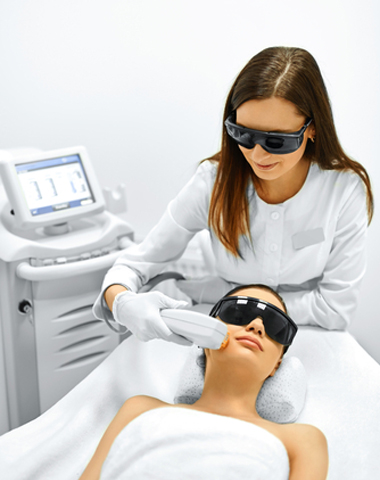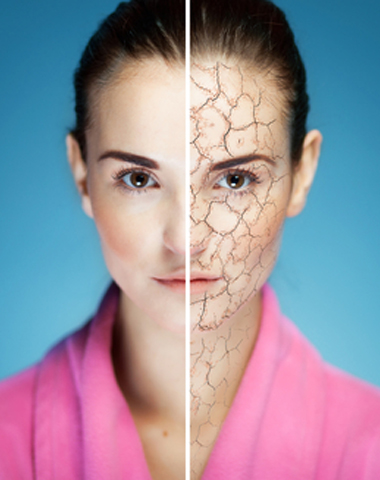 Melasma is common skin problem that many people don’t know about and don’t realize they have. Manifesting as dark patches (brown and gray-brown) on your cheeks, nose, forehead, chin, and above your upper lip (and sometimes on your neck or forearms – think places that get a ton of sun exposure), melasma is a visible skin problem, rather than an uncomfortable one.
Melasma is common skin problem that many people don’t know about and don’t realize they have. Manifesting as dark patches (brown and gray-brown) on your cheeks, nose, forehead, chin, and above your upper lip (and sometimes on your neck or forearms – think places that get a ton of sun exposure), melasma is a visible skin problem, rather than an uncomfortable one.
And while it doesn’t hurt or irritate you physically, no one likes having brown splotches randomly (and suddenly out of nowhere) on their face!
Who gets it and why?
People with darker skin tones and who tan easily are more susceptible to melasma as well as thosewhose family members have it. The specific cause of melasma is unknown; however, it’s thought that the people with melasma’s melanocytes (cells that cause pigmentation) are overactive. But even though we don’t know the exact cause, we do know melasma’s triggers:
The Sun: As with most skin problems, sun damage plays a significant role. In this case, UV rays stimulate melanocytes which means that even minimal exposure can bring it back and explains why it recurs.
Your Hormones: With melasma, it seems that hormones are the likely culprit since womentend to get it more than men (only 10% of sufferers are men) and it often comes hand in hand with pregnancy. When pregnant women get it, it’s called chloasma (the mask of pregnancy). But, birth control pills and hormone replacement therapies can also bring it on.
Your Skin Care Regime: Combine an irritating skin care product with sun exposure and/or pregnancy and melasma can worsen, which is a great reason to take good care of your skin with dermatologically approved products for daily advanced skin care like SkinCeuticals.
How is it diagnosed and treated?
As skilled skin experts, dermatologists can diagnose melasma on sight, but we may examine your skin using a Wood’s lamp to see how deeply it’s penetrating your skin. Even though we can typically diagnose immediately, melasma can also look like other skin conditions, so wemay need to perform a skin biopsy to confirm.
For some people, melasma fades without treatment when a trigger is removed (following pregnancy or going off birth control pills), but it’s not always the case. And even though treatment can eliminate your melasma, it tends to recur – especially if you’re not taking proper care to avoid sun damage or care for your skin. The best way to tackle melasma is with a combination of medical treatments, sun protection, and an advanced daily skin care regime.
Medical Treatments: There are many medical treatments you can try for melasma that vary based on your skin and your budget. Be sure to consult with an expert dermatologist because the wrong treatment can create new skin problems; treatments must be tailored to your specific skin.
Medical procedures: Depending on your specific skin, we may suggest laser or light-based treatments or medical facials like a chemical peel or microdermabrasion. Each of these interventions has its own unique benefits and may also aid in correcting other skin problems or concerns.
Medical grade topical treatments: A hydroquinone treatment can be a cream, lotion, gel, or liquid and works to lighten the skin. You may benefit most from azelaic acid, kojic acid, tretinoin, a corticosteroid, or a triple cream (combination of hydroquinone, tretinoin, and a corticosteroid).
Some of these topical treatments are over the counter, while others are prescriptions, but your dermatologist will recommend the best option for you.
Sun Protection: The number one treatment for melasma is sun protection. Because the sun is a major trigger, you should wear a broad-spectrum sunscreen with a minimum SPF 30, and zinc oxide or titanium dioxide on your face daily (even on cloudy days and even in the winter). Give the sunscreen 15 minutes to set in before going outside and reapply every couple of hours.
(While this is a good treatment for melasma, it’s just a good practice for your skin no matter what conditions or concerns you have). Also take care to shade your skin as much as possible with hats and clothing to give extra protection since sunscreen alone may not be enough.
Advanced Daily Skin Care Regime: Low-grade skin care products can irritate the skin, causing stinging or burning. A healthy regimen helps prevent skin concerns, treat skin problems, and maintain healthy skin. At Rao Dermatology, we use SkinCeuticals because it’s backed by science and they continually win awards for their pharmaceutical-grade products.
While it’s not necessarily a treatment, if you’re skin is sensitive or prone to melasma, try to avoid waxing. Waxing can cause inflammation and aggravate melasma, so ask us about other hair removal options that will work for you.
What can you expect from melasma treatment?
Melasma can be a stubborn condition, but with a dermatologist’s care and a few months of treatment, you should see improvement. To get the most out of your treatment though, take particular care to follow your dermatologist’s instructions. After it clears, you may need to continue maintenance therapy to prevent the melasma from recurring.
Fill in the form below now to schedule your free consultation.



